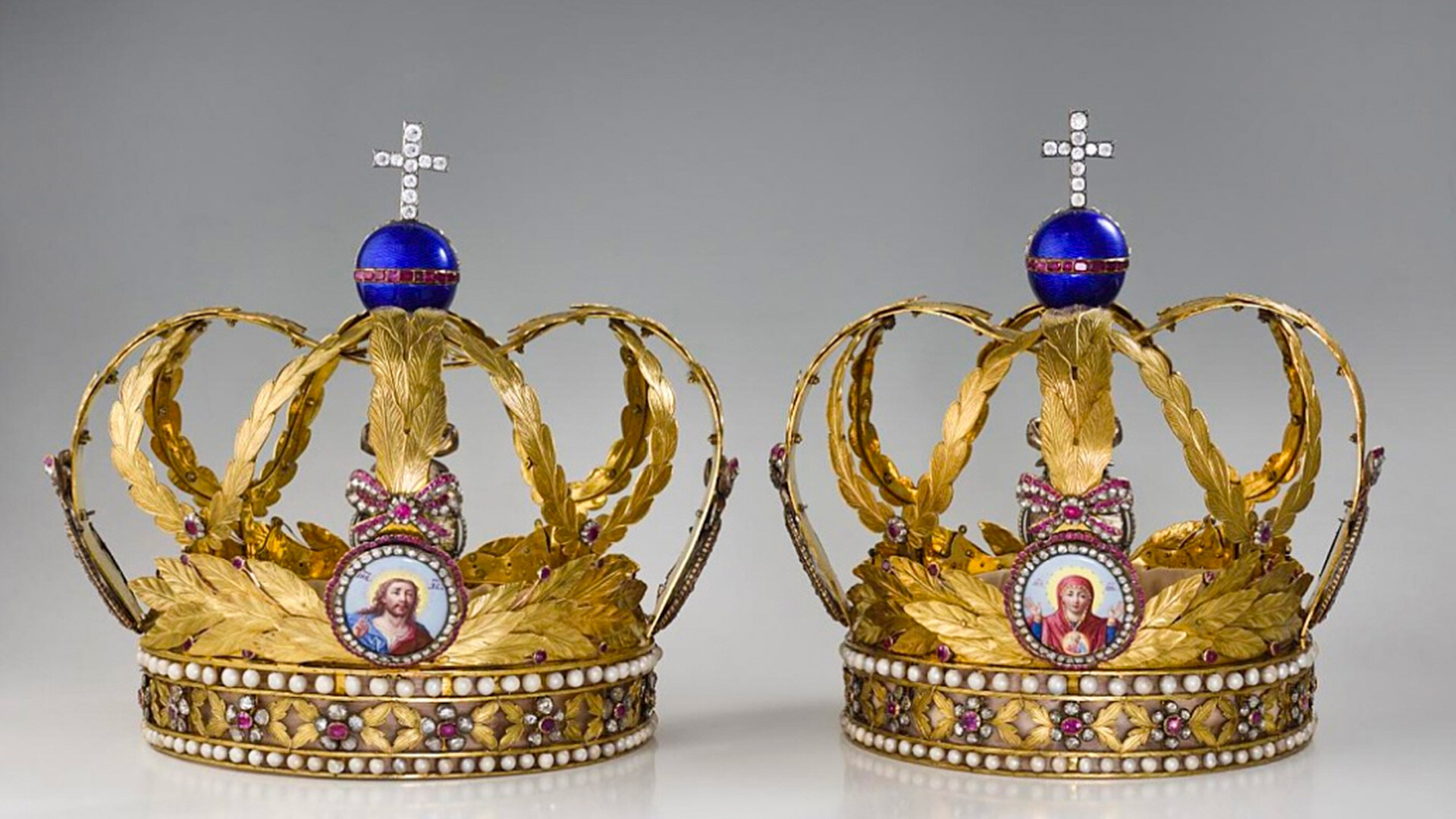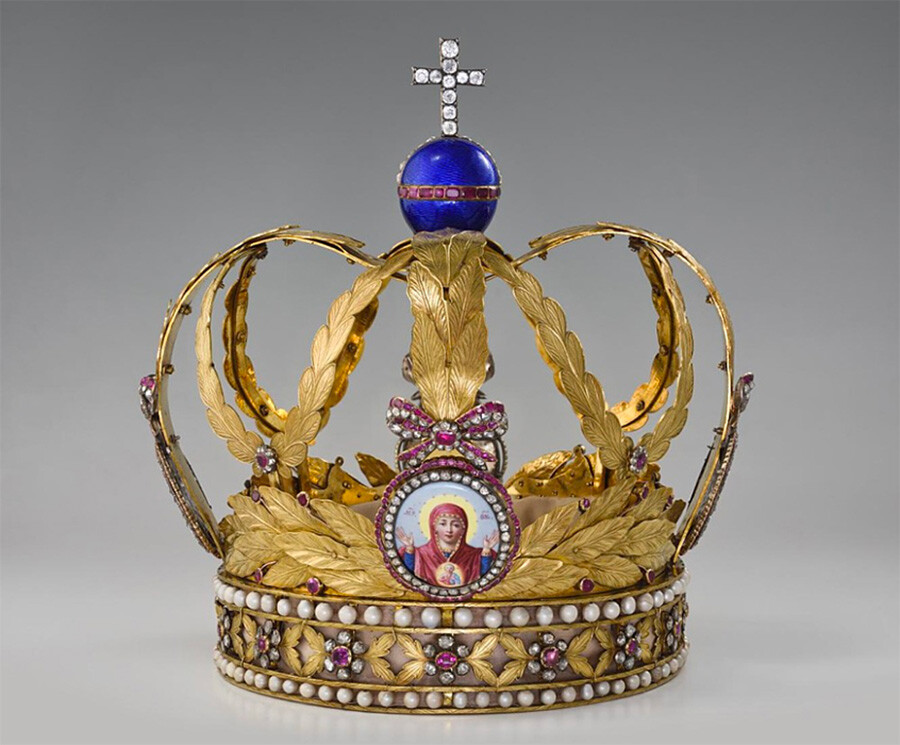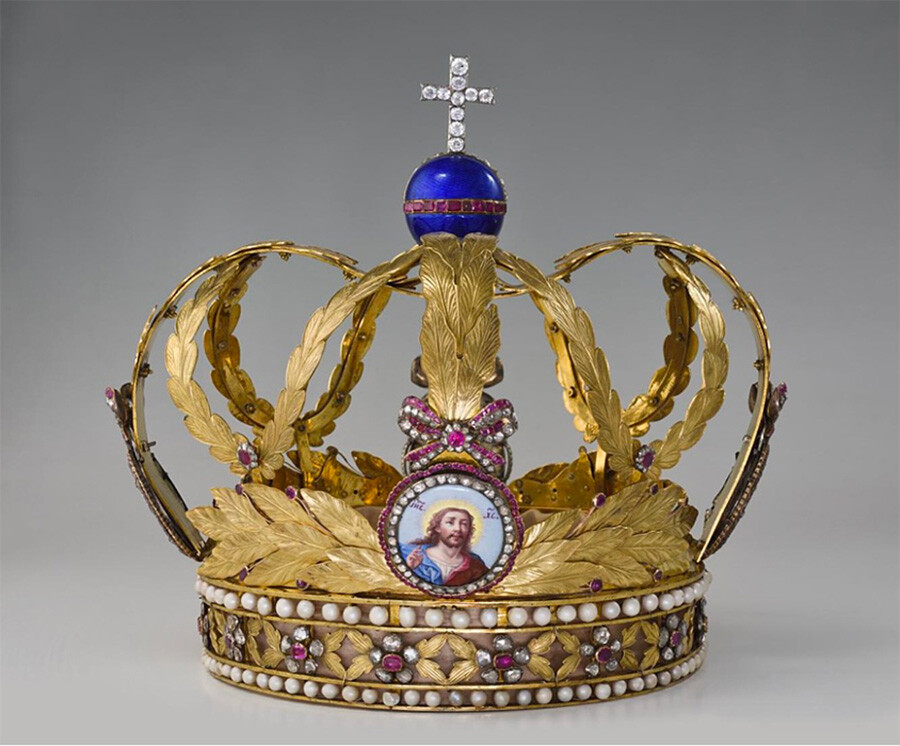How did Pushkin get the marriage crowns of Catherine II?

During the ceremony, marriage crowns of gilded silver, decorated with pearls, diamond crosses and enamel images of St. Catherine and St. George were held above the heads of the bride and groom. There is a legend that these wedding crowns were once commissioned by Prince Grigory Potemkin for his own wedding to... Empress Catherine II!

It seemed that all odds were against this marriage: On the previous day, the poet’s friend Anton Delvig died, then the wedding ceremony could no longer be held at the church where it was originally planned, so it was urgently necessary to find another location, and, on the day of the wedding, the poet's future mother-in-law said that the wedding would not take place - the bride had no money to hire a carriage to take her to the church.
And, yet, the wedding did take place. But, it was accompanied by bad omens. The wedding candle held by Pushkin went out. The wedding couple were so excited that they dropped one of the wedding rings - the poet had to pick it up. A series of unpleasant coincidences, according to witnesses, briefly deprived Pushkin of balance, but, shortly after, the newlyweds left for St. Petersburg and forgot about omens and superstitions.

And, in 1931, this church was closed by the Soviet authorities, the wedding wreaths were transferred to the Armory, where they are still kept. You can see them until June 30, 2024, at the ‘Pushkin. 225’ exhibition at the Pushkin State Museum in Moscow.

